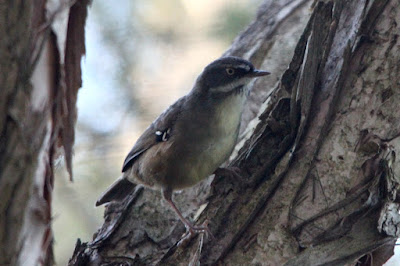I read today that this is called sexual dimorphism. Birds demonstrate this as well of course but some species demonstrate non-sexual dimorphism.
I had always been aware that the Eastern Reef Egret had dark and light forms known as morphs. Up 'till now I had only ever seen the dark morph (living down south) but this month on the Sunshine Coast I believe I have seen both.
This prompted a little exploration about how this dimorphism works with particular reference to this species. I read:
- Wikipedia's pages Eastern Reef Egret and sexual dimorphism
- Eremaea's listing for Eastern Reef Egret
- Birdlife Australia re Eastern Reef Egret
- Same for Birds in Backyards
 |
| Eastern Reef Egret (Egretta sacra) Dark morph, Noosa Heads headland |
 |
| Eastern Reef Egret, light morph, Caloundra |
This photo from Thailand hosted by Wikipedia at their Eastern Reef egret page claims to have both forms in the one frame:
Birders look away (instagram warning):
Black-shouldered kite, Wedge-tailed eagle, Eastern spinebill



























































